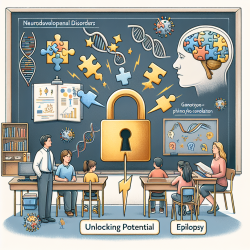Introduction
In the evolving landscape of healthcare, interprofessional education (IPE) has become a cornerstone for enhancing collaboration and improving patient outcomes. A recent study titled "From Introduction to Integration: Providing Community-Engaged Structure for Interprofessional Education" provides valuable insights into the integration of IPE in healthcare education. This blog explores how practitioners, particularly in speech-language pathology, can leverage these findings to improve their skills and foster better outcomes for children.
Understanding the Research
The study conducted by Griffin et al. (2016) at Central Michigan University highlights the implementation of an IPE program involving students from various healthcare disciplines, including speech-language pathology. The program emphasized problem-based learning (PBL) and community engagement to enhance interprofessional collaboration.
Key findings from the research indicated that students reported higher satisfaction with interactive, problem-based sessions compared to traditional didactic sessions. This suggests that engaging students in real-world scenarios and collaborative problem-solving can significantly improve their learning experience and interprofessional skills.
Application in Speech-Language Pathology
For practitioners in speech-language pathology, integrating IPE into their practice can be transformative. Here are some actionable steps based on the study's outcomes:
- Embrace Problem-Based Learning: Incorporate PBL into training sessions for speech-language pathologists. This approach encourages critical thinking and collaboration, preparing practitioners to work effectively within multidisciplinary teams.
- Foster Community Engagement: Engage with community partners to create real-world learning opportunities. This can involve collaborations with schools, healthcare facilities, and other community organizations to provide comprehensive care and support to children.
- Promote Interprofessional Collaboration: Encourage speech-language pathologists to participate in interdisciplinary meetings and workshops. This exposure helps them understand the roles of other professionals and how to collaborate effectively to enhance patient care.
Encouraging Further Research
While the study provides a solid foundation, further research is essential to explore the long-term impact of IPE on patient outcomes, particularly in pediatric settings. Practitioners are encouraged to contribute to this growing body of knowledge by documenting their experiences and outcomes when implementing IPE strategies.
Conclusion
The integration of interprofessional education into speech-language pathology practice holds great promise for improving collaboration and patient outcomes. By adopting problem-based learning and fostering community engagement, practitioners can enhance their skills and contribute to the overall effectiveness of healthcare teams.
To read the original research paper, please follow this link: From Introduction to Integration: Providing Community-Engaged Structure for Interprofessional Education.










